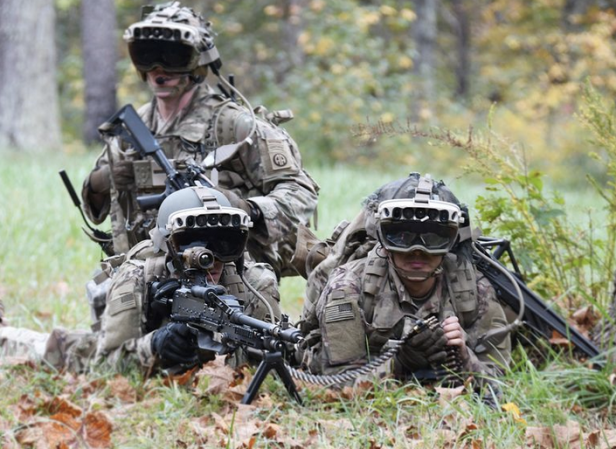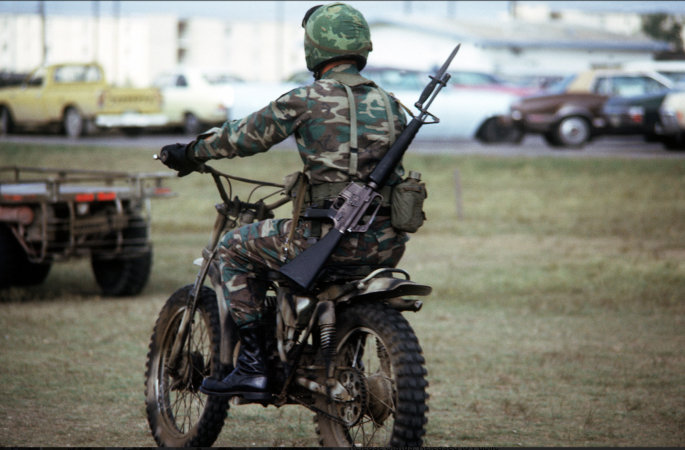
Over the course of fighting America’s most recent wars, troops faced the threat of improvised explosive devices, or IEDs on a daily basis. More than a decade later, the U.S. Army is building a new crash test dummy to better understand the physical risks these crude but deadly weapons pose to soldiers downrange.
In addition to registering the location of impacts and stress during tests, the new design will be coupled with an extensive database to help predict how likely an individual is to suffer a serious injury. The ground combat branch has dubbed the program the Warrior Injury Assessment Manikin, or WIAMan. As anyone in the military probably already knows, “WIA” is also the acronym for “wounded in action.”
The Army hopes that the new device will help provide more information on just what happens when a bomb goes off underneath a vehicle. “There is a wide range of test conditions and environment parameters” and “no two sets of system responses are the same,” engineers and scientists working on WIAMan explained in a briefing in June.
The individuals from the Army’s Research, Development and Engineering Command and the Army Research Laboratory sat down with defense contractors to talk about the state of the program. The service wants to start looking for a company to make WIAMan dummies by the end of 2017.
But just building a prototype machine that fits the requirements has been a long and complex process. The Army kicked off WIAMan more than five years ago as the bulk of American forces were starting to leave Iraq.
By that point, IEDs were a well-known threat. In Iraq and Afghanistan, huge bombs routinely ripped through unarmored Humvees and better-protected vehicles. The Pentagon had responded by rushing mine-resistant trucks, bomb detectors and jammers and other gear to troops in the field. Though this equipment saved lives, it did not eliminate serious injuries.
During Operation Enduring Freedom and Operation Iraqi Freedom, explosives had accounted for more than three quarters of all military injuries, according to a study Dr. Narayan Yoganandan, Chairman of Biomedical Engineering in the Department of Neurosurgery and Professor of Biomedical Engineering at Marquette University, led and published in Clinical Biomechanics in 2013. Explosions underneath vehicles specifically were likely to cause severe damage to the pelvis, spinal column, legs and feet, Andrew Merkle, a principal professional staff member at Johns Hopkins’ Applied Physics Laboratory, and his colleagues explained in another 2013 piece.
At that time, Army researchers had to rely on modified auto industry manikin, called Hybrid III. The manufacturer, Humanetics, only intended the original dummy for testing head on collisions in commercial cars. On top of that, the design reflected an outdated 1970s body shape.
Instruments in this surrogate person only show damage and strain in broad areas and joints. To help engineers and scientists log potential injuries, the Army’s version only has five so-called “biofidelity response corridors,” or BRCs.
By comparison, WIAMan will have more than 800 BRCs. This means that instead of simply sensing impact on a section of chest or foot as a whole, the manikin would report dangerous forces on particular ribs or the soles or heel specifically.
The prototype dummy was structured around a 50th percentile male soldier. After the Pentagon removed the last restrictions preventing women serving in combat roles in December 2015, the full production run will have to include female body shapes.
Combined with an extensive and growing knowledge-base of injury data, WIAMan should not only be able to highlight possibly dangers but predict them, too. This means that when the Army considers a new tank or truck in the future, researchers might be able to gauge the likelihood of the drivers and occupants suffering specific injuries if they run over a roadside bomb.
And capturing more data from the dummy itself means engineers won’t have to try and cram secondary cameras or sensors inside armored vehicle compartments or truck cabs to gather additional significant information. These spaces are cramped to begin with and these sensitive systems are often damaged in testing.
A “blast test of a surrogate vehicle structure … provided realism,” another one of the June presentations noted. “However, it is costly, not repeatable and occupant response cannot be fully observed.”
Unfortunately, WIAMan alone won’t be able to fill all of the Army’s research gaps by itself. The manikin will not be able to test for a slew of effects beyond an underbody blast.
In its prototype form, the soldier stand-in cannot determine whether troops might be at risk from shrapnel or burns. In Iraq and Afghanistan, IEDs often set off fuel or ammunition in vehicles leading to serious burns.
In 2006, the Marine Corps notably banned leathernecks from wearing synthetic clothing, including popular Under Armour undershirts, because of their low melting points. The Corps found evidence that the garments could fuse to skin with horrific results in a fire.
More importantly, WIAMan will not be able to help gather badly needed information about the potential for traumatic brain injuries, commonly called TBIs. Concussions and other TBIs have been increasingly linked to long-term brain damage and increased risk of serious health conditions.
Since 2000, the Pentagon has diagnosed more than 340,000 active service members with various kinds of TBIs, according to statistics compiled by the Defense and Veterans Brain Injury Center. Medical professionals classified 5,000 of these cases as “penetrating,” instances where an actual object pierces the skull and physically hits the brain.
By far, the majority of the instances are “mild,” a synonym for concussions. However, research shows that people who suffer from multiple instances of these injuries suffer far from mild consequences.
While scientists are still studying the exact relationship between concussions and other health issues, there is significant correlation between the injuries and a condition known as chronic traumatic encephalopathy. Also seen in boxers and other professional athletes, this is a form of dementia characterized by declining memory, cognition and motor control and itself linked to depression, suicidal behavior, and aggressive outbursts.
American troops have already spent some 15 years in a state or near constant combat operations. Given the rise of new terrorist groups like Islamic State, the Pentagon’s high operational tempo seems unlikely to change in the near future.
In the meantime, soldiers and other service members will likely continue to suffer TBIs and other injuries from IEDs. Though not perfect, WIAMan will give scientists and engineers critical information to help protect our men and women in uniform.

























